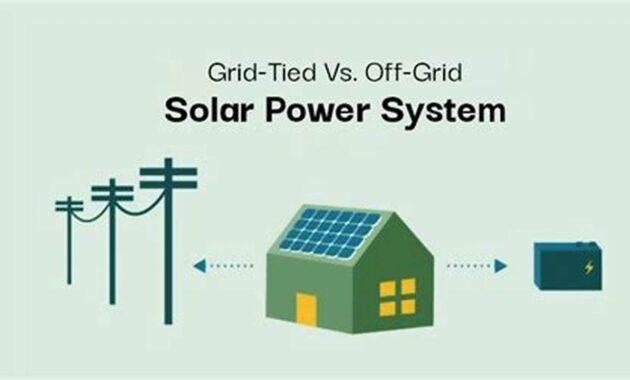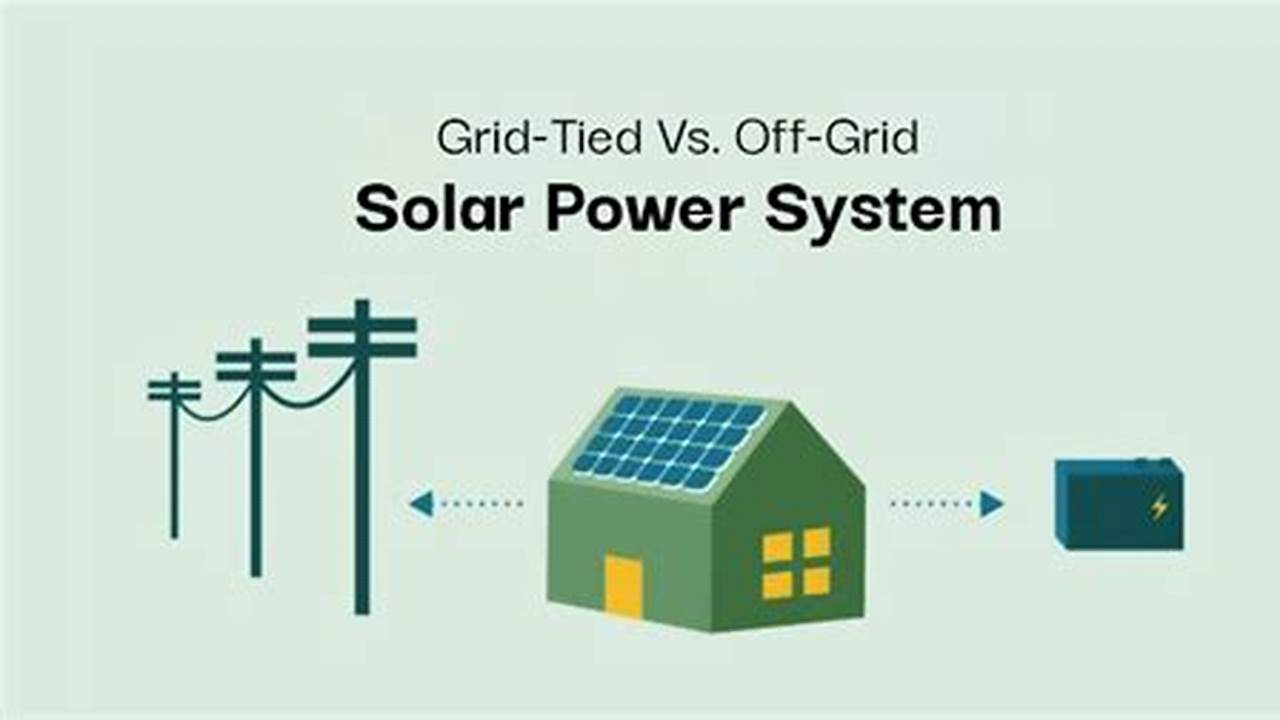
Non-grid tied solar systems are standalone power systems that generate electricity from the sun without being connected to the electrical grid. These systems are often used in remote areas, or by people who want to reduce their reliance on fossil fuels. Non-grid tied solar systems typically consist of solar panels, a battery bank, and an inverter.
Non-grid tied solar systems offer a number of benefits, including:reducing electricity costs, increasing energy independence, and reducing environmental impact. They can also be used to provide backup power in the event of a grid outage. The cost of non-grid tied solar systems has come down in recent years, making them a more affordable option for many people.
If you are considering installing a non-grid tied solar system, there are a few things you should keep in mind. First, you will need to determine how much electricity you need. This will help you determine the size of the solar panel array and battery bank you will need. Second, you will need to choose a location for your solar panels. The panels should be placed in a location where they will receive maximum sunlight. Third, you will need to install a battery bank to store the electricity generated by the solar panels. The battery bank will allow you to use the electricity generated by the solar panels at night or when the sun is not shining.
FAQs on Non-Grid Tied Solar Systems
Non-grid tied solar systems offer a range of benefits, but they also come with some unique considerations. Here are answers to some of the most frequently asked questions about non-grid tied solar systems:
Question 1: What are the benefits of non-grid tied solar systems?
Non-grid tied solar systems offer several benefits, including reducing electricity costs, increasing energy independence, and reducing environmental impact. They can also be used to provide backup power in the event of a grid outage. Question 2: What are the drawbacks of non-grid tied solar systems?
The main drawback of non-grid tied solar systems is that they require a battery bank to store electricity. Batteries can be expensive and have a limited lifespan. Non-grid tied solar systems also require more maintenance than grid-tied systems. Question 3: How much do non-grid tied solar systems cost?
The cost of non-grid tied solar systems varies depending on the size of the system and the components used. A typical system can cost between $10,000 and $25,000. Question 4: How long do non-grid tied solar systems last?
Non-grid tied solar systems can last for 25 years or more. However, the batteries will need to be replaced every 5 to 10 years. Question 5: Are non-grid tied solar systems worth it?
Whether or not a non-grid tied solar system is worth it depends on your individual needs and circumstances. If you live in a remote area or want to reduce your reliance on the grid, a non-grid tied solar system can be a good option. Question 6: How can I learn more about non-grid tied solar systems?
There are a number of resources available to learn more about non-grid tied solar systems. You can talk to a solar installer, read online articles, or attend a workshop.
Non-grid tied solar systems can be a great way to reduce your electricity costs, increase your energy independence, and reduce your environmental impact. However, it is important to weigh the benefits and drawbacks before making a decision.
If you are considering installing a non-grid tied solar system, it is important to do your research and choose a qualified solar installer. With proper planning and installation, a non-grid tied solar system can provide you with many years of clean, renewable energy.
Non-Grid Tied Solar Systems
Non-grid tied solar systems offer a number of benefits, but they also come with some unique challenges. Here are five tips to help you get the most out of your non-grid tied solar system:
Tip 1: Size your system correctly.
The size of your solar system will depend on your energy needs and the amount of sunlight your property receives. It is important to size your system correctly to ensure that you have enough power to meet your needs, but not so much that you are wasting money.
Tip 2: Choose high-quality components.
The components of your solar system will have a big impact on its performance and longevity. It is important to choose high-quality components from reputable manufacturers.
Tip 3: Install your system properly.
A properly installed solar system will be safe and efficient. It is important to hire a qualified solar installer to ensure that your system is installed correctly.
Tip 4: Maintain your system regularly.
Regular maintenance will help to keep your solar system running at its best. This includes cleaning the solar panels, checking the batteries, and inspecting the wiring.
Tip 5: Monitor your system’s performance.
Monitoring your system’s performance will help you to identify any problems early on. This will allow you to take corrective action before the problem becomes more serious.
By following these tips, you can help to ensure that your non-grid tied solar system provides you with many years of clean, renewable energy.
Summary of Key Takeaways
- Size your system correctly.
- Choose high-quality components.
- Install your system properly.
- Maintain your system regularly.
- Monitor your system’s performance.
Conclusion
Non-grid tied solar systems can be a great way to reduce your electricity costs, increase your energy independence, and reduce your environmental impact. By following the tips in this article, you can help to ensure that your non-grid tied solar system provides you with many years of clean, renewable energy.
Conclusion
Non-grid tied solar systems offer a range of benefits, including reducing electricity costs, increasing energy independence, and reducing environmental impact. They are a good option for people who live in remote areas or who want to reduce their reliance on the grid. However, it is important to carefully consider the costs and benefits before making a decision.
When properly sized, installed, and maintained, non-grid tied solar systems can provide many years of clean, renewable energy. They can help to reduce our reliance on fossil fuels and protect the environment. As the cost of solar panels and batteries continues to decline, non-grid tied solar systems will become an increasingly attractive option for people around the world.
